The puppies are raised in our home. They are whelped in my bedroom where I sleep beside them for the first 2 weeks. When they are 3 weeks, they move into the office area and also are exposed to the outdoors around 4 weeks. They have toys, sensory stimulation items, bedding, and lots of noise makers. They are exposed to hair dryers, fans, vacuum cleaners, kitchen appliances, guns fired in the distance, firecrackers, different footing, all rooms of the house, car rides, children, lots of visitors, and more!
I believe that puppies must be stimulated and challenged from an early age in order to grow into stable confident adults. To that end, the first structured stimulation they receive between 3 and 16 days of age and are the exercises outlined in “Early Neurological Stimulation”. You can learn more about these exercises here: http://www.breedingbetterdogs.com/article/early-neurological-stimulation and here: http://dpca.org/BreedEd/early-neurological-stimulation/
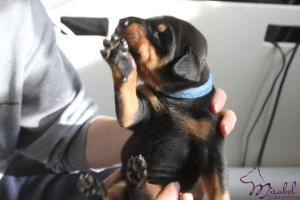
Waving “hello” for the camera while we do our daily Early Neurological Stimulation Head Held Erect exercise. This puppy is future Champion Milo – Ch. Mirabel Here we Go v ADAMAS.
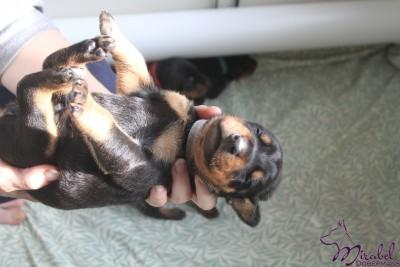
Early Neurological Stimulation Supine Position exercise
I follow the Rule of 7’s which is:
The Rule of 7’s
By the time a puppy is seven weeks old he/she should have:
- Been on 7 different types of surfaces: carpet, concrete, wood, vinyl, grass, dirt, gravel, wood chips
- Played with 7 different types of objects: big balls, small balls, soft fabric toys, fuzzy toys, squeaky toys, paper of cardboard items, metal items, sticks or hose pieces
- Been in 7 different locations: front yard, back yard, basement, kitchen, car, garage, laundry room, bathroom
- Met and played with 7 new people: include children and older adults, someone walking with a cane or stick, someone in a wheelchair or walker
- Been exposed to 7 challenges: climb on a box, climb off a box, go through a tunnel, climb steps, go down steps, climb over obstacles, play hide and seek, in and out of a doorway with a step up or down, run around a fence
- Eaten from 7 different containers; metal, plastic, cardboard, paper, china, pie plate, frying pan
- Eaten in 7 different locations: crate, yard, kitchen, basement, laundry room, living room, bathroom
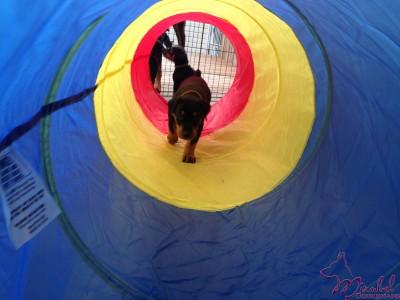
All of the puppies love the tunnel!
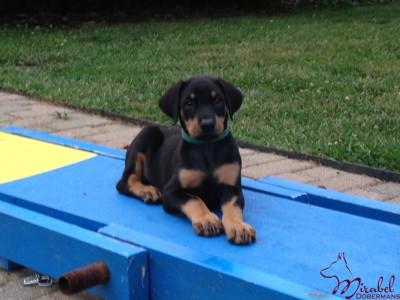
Because of their early exposure, the puppies willingly seek out an agility teeter
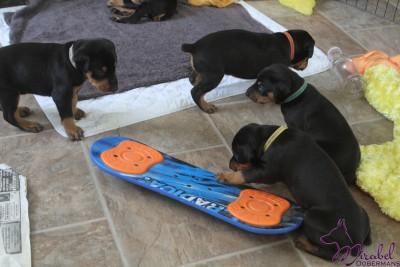
Sensory stimulation begins at 3 weeks of age. Here they are exploring a wobble board.
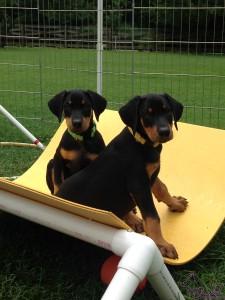
The flimsy board is always a favorite!
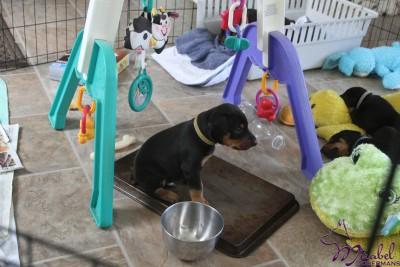
So many new experiences for the babies starting at 3 weeks of age.
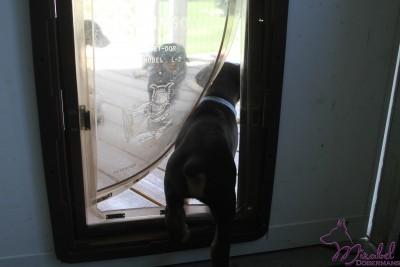
Puppies are exposed to a dog door, that way if their new owner has one, the transition is easy!
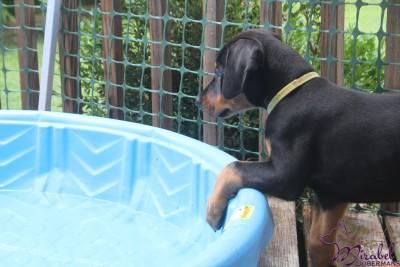
Puppies are exposed to water via a baby pool.
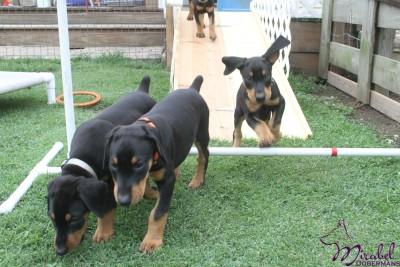
Puppies are exposed to agility jumps
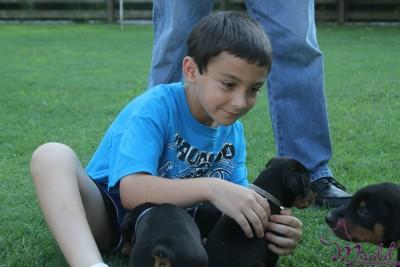
All puppies love children!

Yay! More kids to play with!

The puppies love the activity center
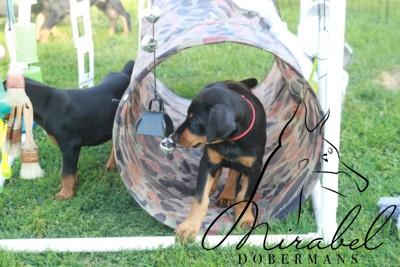
Puppies love the tunnel
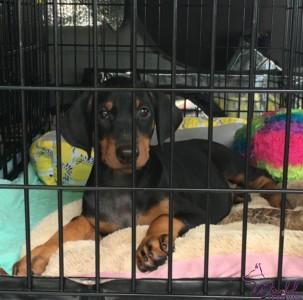
Crate training while riding in the car
Puppies are crate trained
They start off being exposed to a crate where they can come and go as they please. Then they are placed in a crate with siblings and the door is closed for a short period of time. Then they are separated and crated individually. This is an easy transition as they learn to eat individually in their crates. This ensures that they all get their fair share of food and teaches them to handle any crate situation. They all get exposed to different kinds of crates (plastic airline, metal with and without pans/pads) and they learn to accept the crate they are placed in.
Crate training with us ensures a smooth transition to their new owners. Buy a crate for the puppy and use it from day 1 and your puppy will be well adjusted and thank you for continuing the routine they’re used to.
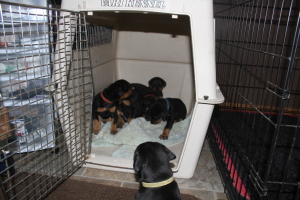
Never too young to get some crate training in.
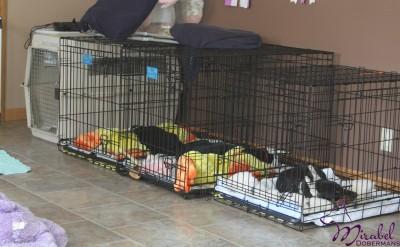
Individual crate training
Puppies Interact With Adult Dogs
The puppies are not taken from their mother completely, even through the weaning process. I put a homemade shirt on mother so that the puppies can’t freely nurse while they’re being weaned. They still get nursing time, but it’s gradually lessened and the shirt facilitates this.
It’s very important that the puppies interact with their mother and other adult dogs so that they have the dog interaction skills they need as they mature.
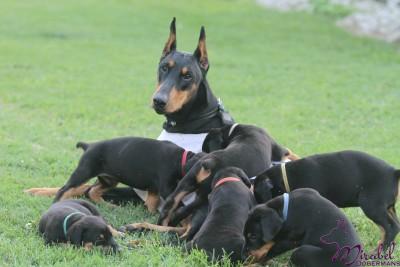
Even through weaning, the puppies spend as much time with mom as she wants.
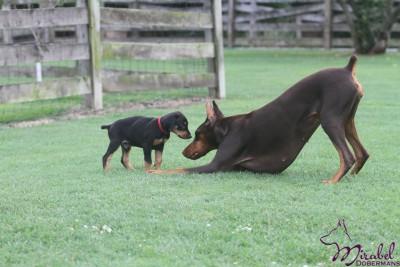
The puppies interact with adult dogs. This is a valuable experience for them.
